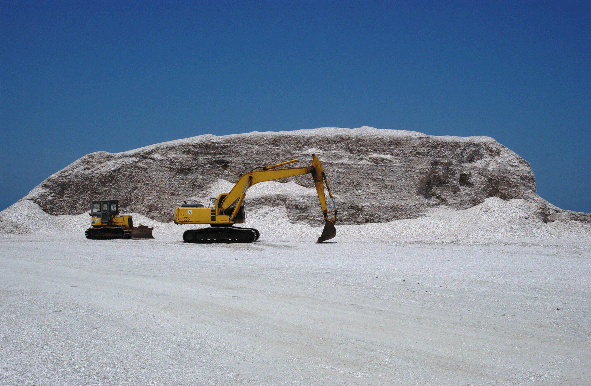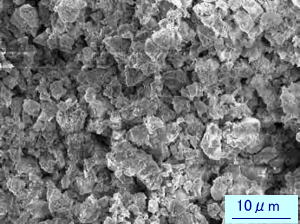
A chemical material-reducing function and an antibacterial function of the scallop shell ceramics

A chemical material-reducing function and an antibacterial function of the scallop shell ceramics
 |
 |
| @@In Aomori Prefecture, the shells of about fifty thousand tons of scallops
a year are scrapped by being piled in fields along with the scallop aquaculture
deposits in Mutsu Bay. It is estimated that about seventy thousand tons
or more are piled in fields in Aomori Prefecture alone. The amount of scrapping
is estimated to increase further because the scallop culture industry feeds
plankton, the cost of the aquaculture is low, and aquaculture is now prospering.
Research was conducted to effectively apply, from an engineering viewpoint,
the structure and the functions of the scallop shells attained through
the process of the evolution. @@The research aimed to use the scallop shell as a structural material, and aspects of shell structure and deformation were studied as a first step in bionic design of the shell. The structure of the surface and a cross-section of the shell were examined in detail using a scanning electron microscope(SEM), and the relationship between strength and structure was explained [1,2]. For practical applications, Cafflose Corporation, Co., Ltd., Yokohama, Japan, manufactured wall materials and paint mainly consisting of scallop shells that were heated to 1050C (scallop shell ceramics) in 1995. |
|
Scallop Shell Ceramics (SSC)
| @@Although scallop shells depurate the polluted effluent of waterways and are effective insect repellents, shell material crushed to about 200Êm and heated for 3 h at 1050 under special conditions has the various functions described below. @ |
| @@The size of the particles of this material observed under an electron microscope less than 10 Êm (Fig. 1). X-ray analysis reveals these particles to be a mixture of calcium carbonate, calcium oxide and calcium hydroxide, which dissolve in water into about 0.1 wt%. The pH value of this solution was about 12.5. |

Fig.1 Scallop Shell Ceramics (SSC)
The Concept of the Bionic Design
| @ As human beings, we must minimize the load on the environment and use of natural resources by industry. Therefore, we must imitate the natural food chain and establish a sustainable recycling system for every type of activity around the world. To this end, we have to advance the effective use of natural resources and recycle those resources in order to protect the environment, that is, the idea of zero-emissions. @ |
|
@The general idea behind bionic design is technology for the application of investigations on the mechanism of birth of life and outgrowth, organization of life, and to design of artificiality. Although, from the viewpoint of a study of the material, the materials of the creature is made of under the limited conditions such as temperature, pressure, the material element, etc., these biological materials are very marvelous and frequently commonsense materials and the organization. Therefore, the structure, organization, and ecology of creatures in nature should be used to develop new artificial materials, machines, structures, systems, and functional materials. This concept corresponds to the fundamental concept of zero-emissions. @ |
| @ In Aomori Prefecture, shells of about fifty thousand tons of scallop a year are scrapped by piling them in fields in large amounts along with the scallop aquaculture in Mutsu Bay. This esearch involves effective use of the scrapped scallop shells and, from an engineering viewpoint, applications concerning the shell's rational structure and functional properties that were acquired through the process of many years of evolution. The first part of the research involved deatailed observation of the ultrastructure of the shell using a scanning electron microscope. |